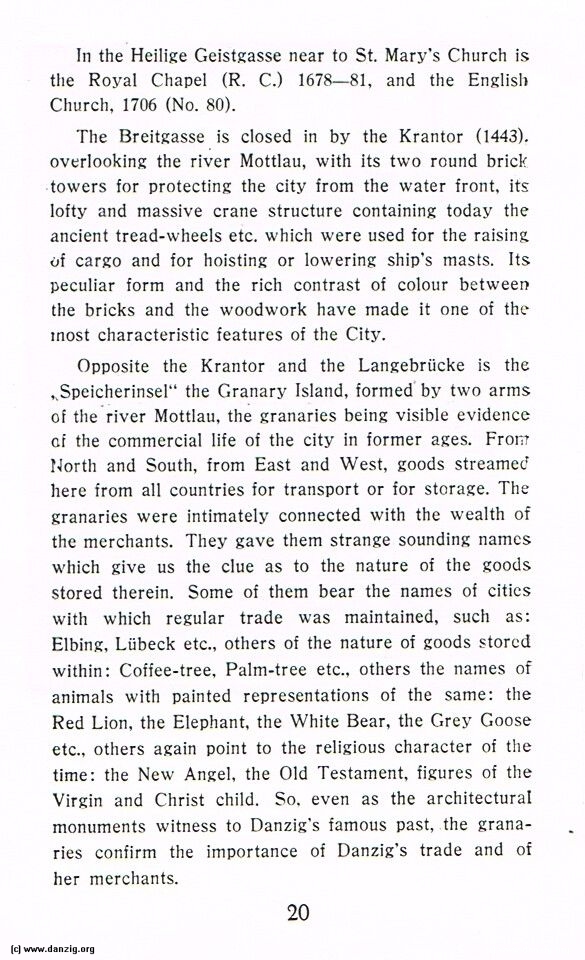
In the Heilige Geistgasse near to St. Mary’s Church is the Royal Chapel (R. C.) 1678—81, and the English Church, 1706 (No. 80).
The I3reitgasse is closed in by the Krantor (1443). overlooking the river Mottlau, with its two round brick towers for protecting the city from the water front, its lofty and massive crane structure containing today the ancient tread-wheels etc. which were used for the raising of cargo and for hoisting or lowering ship’s masts, Its peculiar form and the rich contrast of colour between the bricks and the woodwork have made it one of the most characteristic features of the City.
Opposite the Krantor and the Langebrücke is the Speicherinsel’ the Granary Island, formed by two arms of the river Mottlau, the granaries being visible evidence cf the commercial life of the city in former ages. Froit North and South, from East and West, goods streamect here from all countries for transport or for storage. The granaries were intimately connected with the wealth of the merchants. They gave them strange sounding names which give us the clue as to the nature of the goods stored therein. Some of them bear the names of cities with which regular trade was maintained, such as: Elbing, Lübeck etc., others of the nature of goods stored within: Coffee-tree. Palm-tree etc.. others the names of animals with painted representations of the same: the Red Lion, the Elephant, the White Bear, the Grey Goose etc., others again point to the religious character of the time: the New Angel, the Old Testament, figures of the Virgin and Christ child. So. even as the architectural monuments witness to Danzig’s famous past, the grana ries confirm the importance of Danzig’s trade and of her merchants.
Danzig Report Vol. 1 - Nr. 48 - July - August - September - 1985, Page 31.
Hits: 3238
Added: 17/06/2015
Copyright: 2025 Danzig.org

